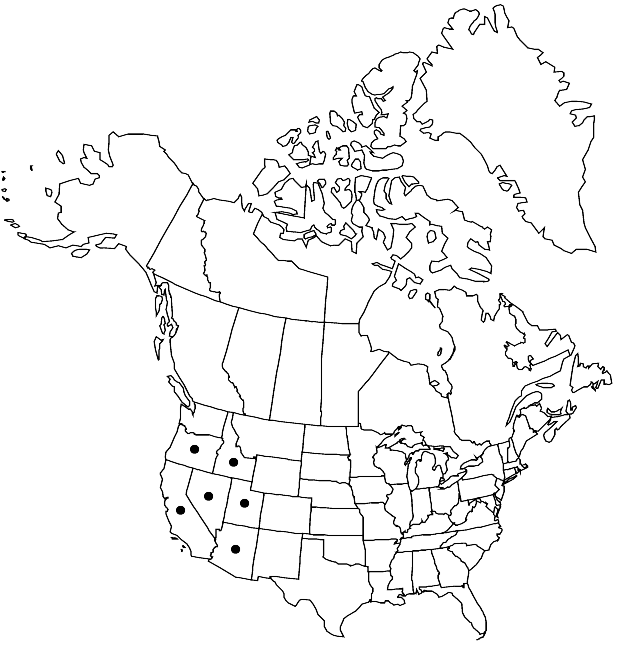Physaria chambersii
Rhodora 41: 403, plate 556, figs. 15–18. 1939.
Perennials; caudex usually simple, sometimes branched, (thick, cespitose); (silvery) pubescent throughout, trichomes few-rayed, rays furcate, sometimes slightly fused at base, (umbonate, lightly tuberculate to nearly smooth). Stems several from base, erect or decumbent (arising laterally, unbranched), 0.5–1.5 mm. Basal leaves: (petiole slender); blade obovate to orbicular, 3–6 cm (width 10–20 mm), margins entire or dentate. Cauline leaves: blade spatulate, 1–2 cm (width 3–6 mm), margins entire, (apex often acute). Racemes congested. Fruiting pedicels (divaricate, slightly sigmoid), 8–15 mm. Flowers: sepals narrowly lanceolate, 5–8 (–9) mm; petals narrowly oblanceolate, 9–12 mm, (claw undifferentiated from blade). Fruits (often purplish in age), didymous, subreniform, strongly inflated, 9–18 × 11–21 (–30) mm, (papery, base obtuse to slightly cordate, apical sinus V-shaped or convex, open crests rounded); valves (2-keeled on side away from replum, each 3-sided, keels rounded, sides flat or slightly convex, retaining seeds after dehiscence), evenly and densely pubescent; replum oblong, as wide as or wider than fruits, apex obtuse; ovules 4–12 per ovary; style (4–) 6–8 mm (exceeding sinus). Seeds flattened. 2n = 8, 10, 16, 24.
Phenology: Flowering Apr–Jul.
Habitat: Clay hillsides, limestone gravel, dolomite ridges, roadbanks, loose gravel, reddish clay, sagebrush and pinyon-juniper areas
Elevation: 1500-3200 m
Distribution

Ariz., Calif., Idaho, Nev., Oreg., Utah.
Discussion
Physaria chambersii has been divided into three varieties based on whether the fruit is stipitate (var. canaani) or not, and whether the caudex elongates (var. sobolifera) or not (var. chambersii). In this species and in some others, e.g., P. newberryi, the latter character often depends on substrate and microclimate. Shifting substrates, such as moving sand and talus, often cause caudices to elongate. The species can be confused with 57. P. newberryi.
Selected References
None.
Lower Taxa
No values specified."not" is not a number. "elongated" is not a number."thick" is not a number.